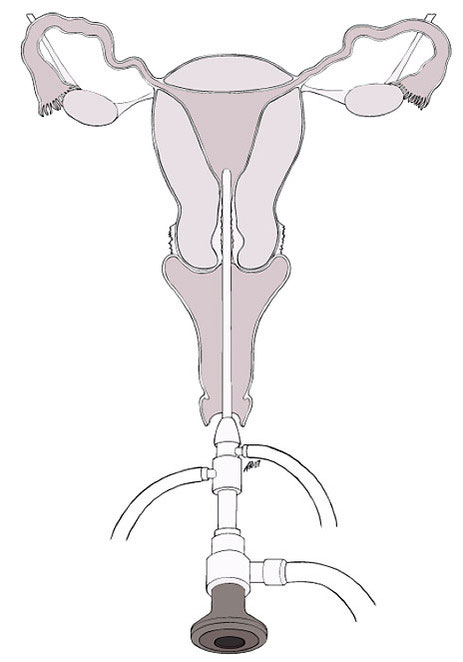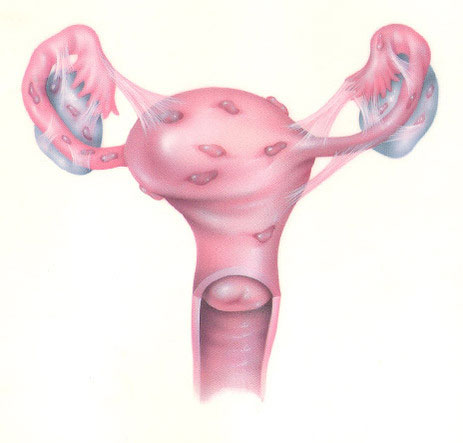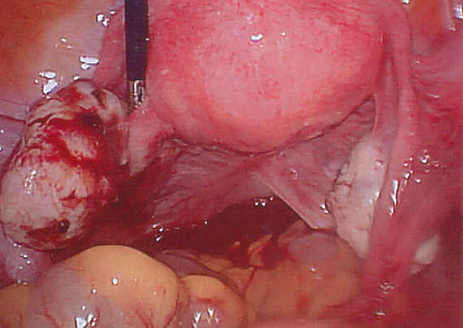Laparoscopy is also commonly referred to as “Band-Aid surgery” or minimally invasive surgery. It is typically performed on an outpatient basis using 2 or 3 small incisions about 1/2 an inch each. The first incision is through the belly button. We use this one to introduce a lighted viewing instrument called a laparoscope. The laparoscope allows us to see the reproductive organs directly. Through the other incisions, small operating instruments or laser fibers can be passed so we can correct any abnormalities that are found. Operating time is about an hour. The patient then recovers for 2 to 3 hours in the hospital and goes home on the same day. Typically, decreased activity is advised for 48-72 hours and then normal activity can resume.

Laparoscopic Procedure
Laparoscopy is frequently combined with hysteroscopy, which is a procedure to check the inside of the uterus.
Hysteroscopy is performed through the vaginal canal without any incisions. The cervix ( opening of the uterus ) is dilated or stretched and we work though this to reach the inside of the uterus. Hysteroscopy can be used to remove scar tissue, or polyps or fibroids from within the uterus. We also use the procedure to open the tubes with catheters if they are plugged at their origin in the uterus.

Hysteroscopic Procedure
There are two types of surgery: open or large incision surgery and laparoscopic or small incision surgery. Today we try to do as much as possible through laparoscopic surgery because it is easier for the patient and recovery time is a few days. As technology has improved we are able to use laparoscopic surgery to treat more complex problems. We can use ancillary equipment such as lasers to remove endometriosis, and scarring of the tubes. The following is a diagram of a laparoscopic procedure using two incisions:

Mild Endometriosis
Endometriosis and scarring as depicted on the right can be very effectively treated with laparoscopy. The fallopian tubes can also be opened using lasers or catheters. We can work inside of the uterus using an instrument called a hysteroscope to remove scarring or fibroids.
Open surgery is still used for reconstruction of the tubes after a tubal ligation procedure. Tubal reversal gives excellent results in many cases. For a full discussion of open microsurgery, please look at the tubal reversal section or vasecotomy reversal.
Surgery gives good results if there is mild to moderate disease. If there is severe scarring or endometriosis, in vitro techniques give superior results. Read more about Endometriosis.
The image below shows endometriosis of the left ovary.

Endometriosis of the left ovary